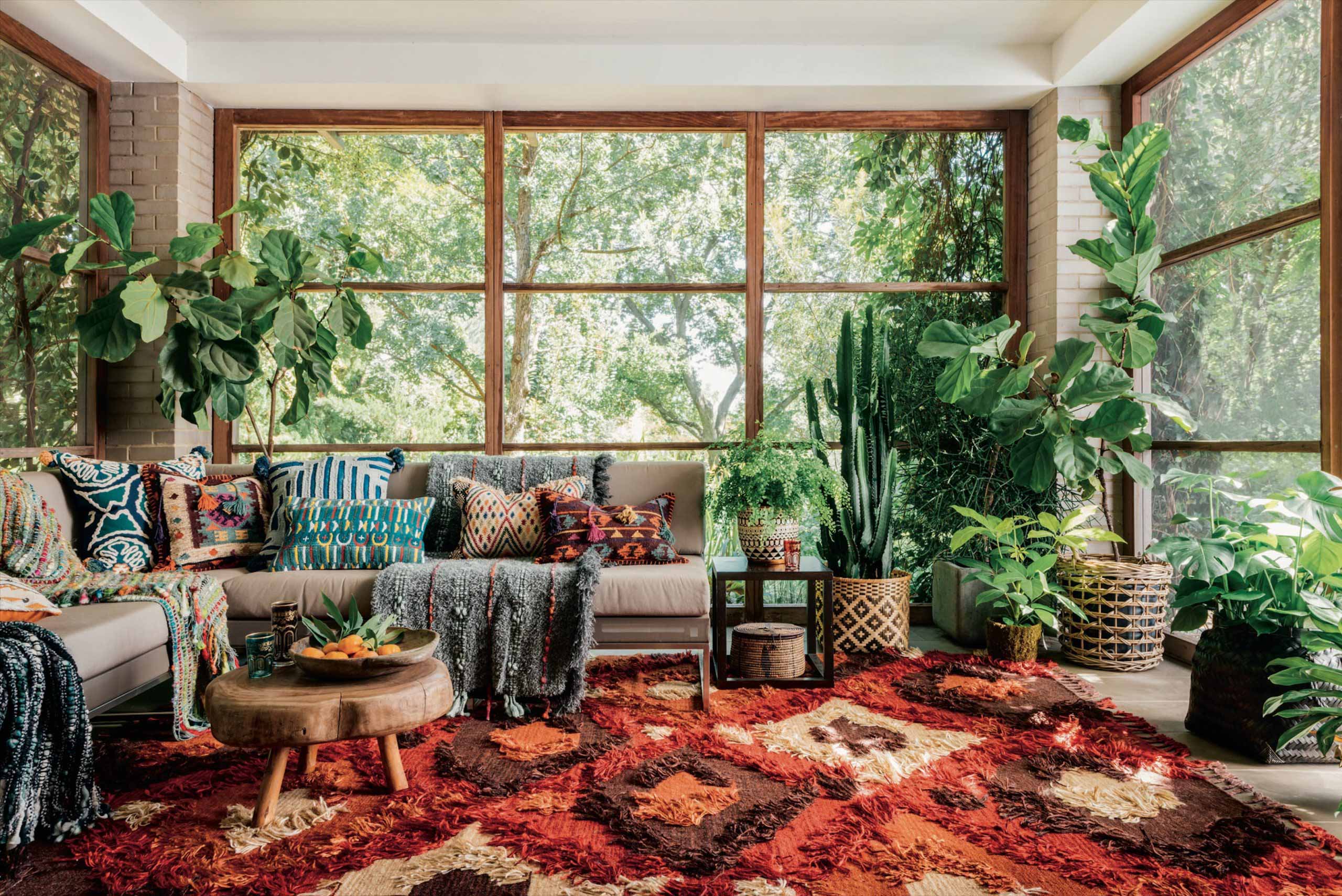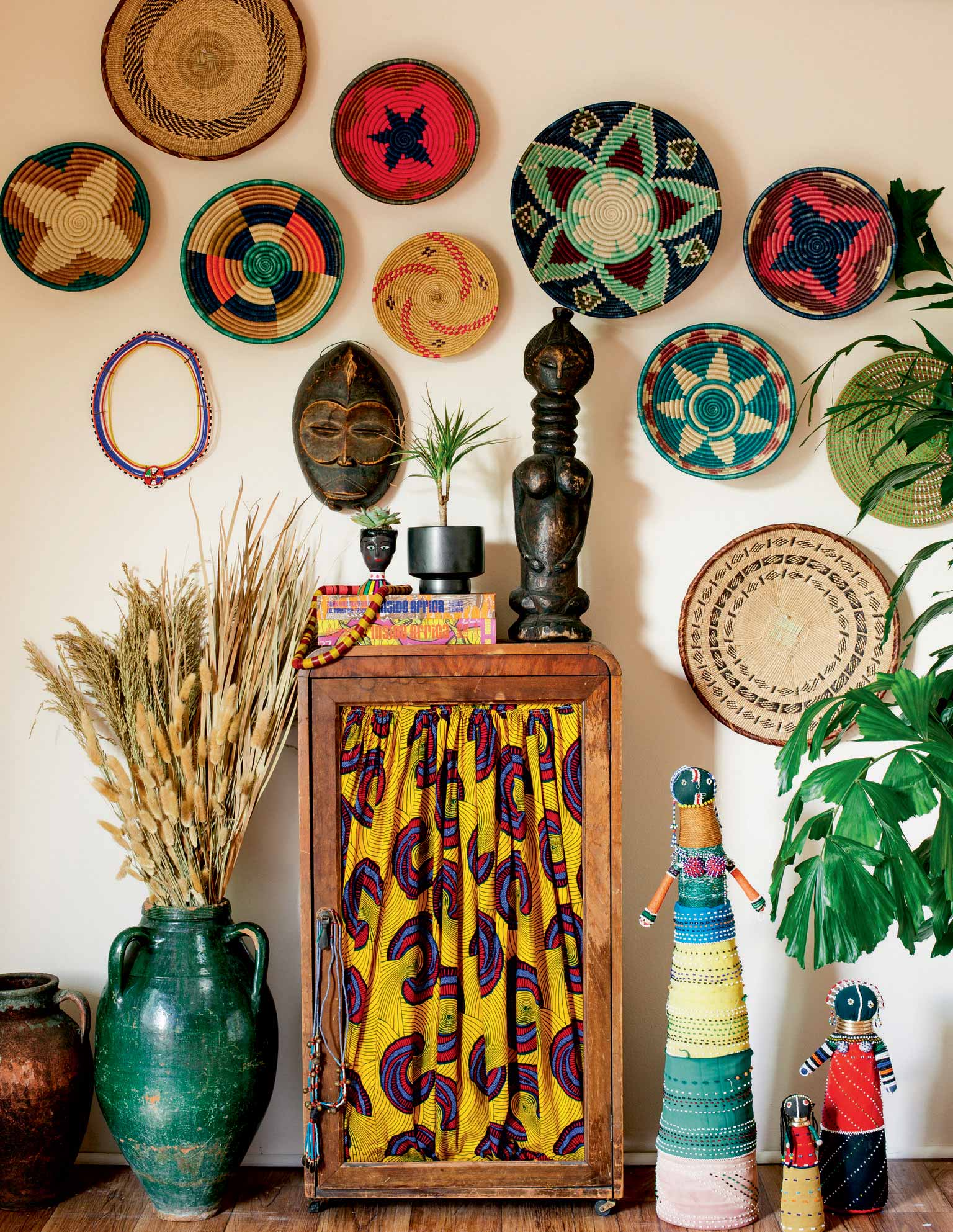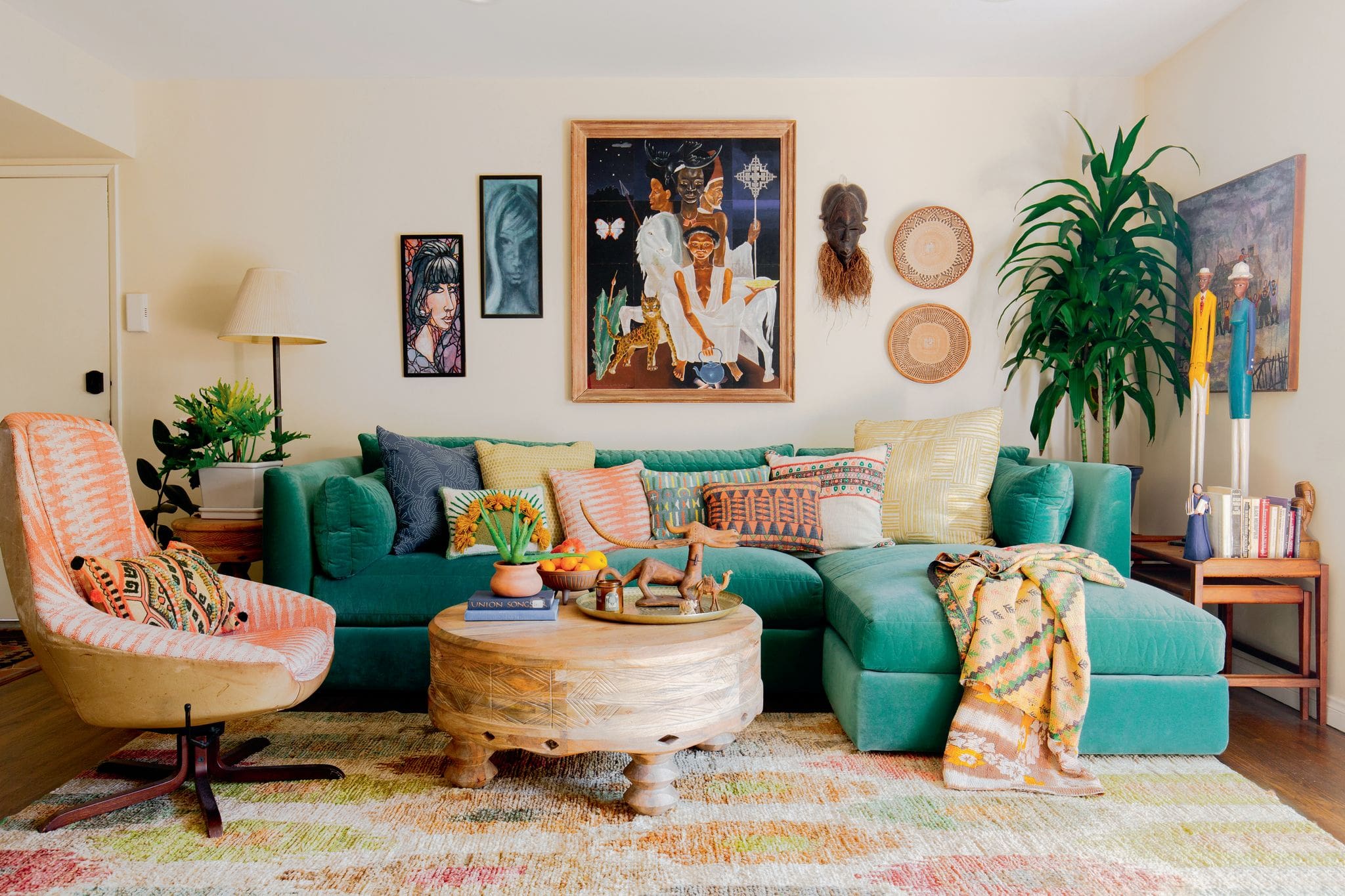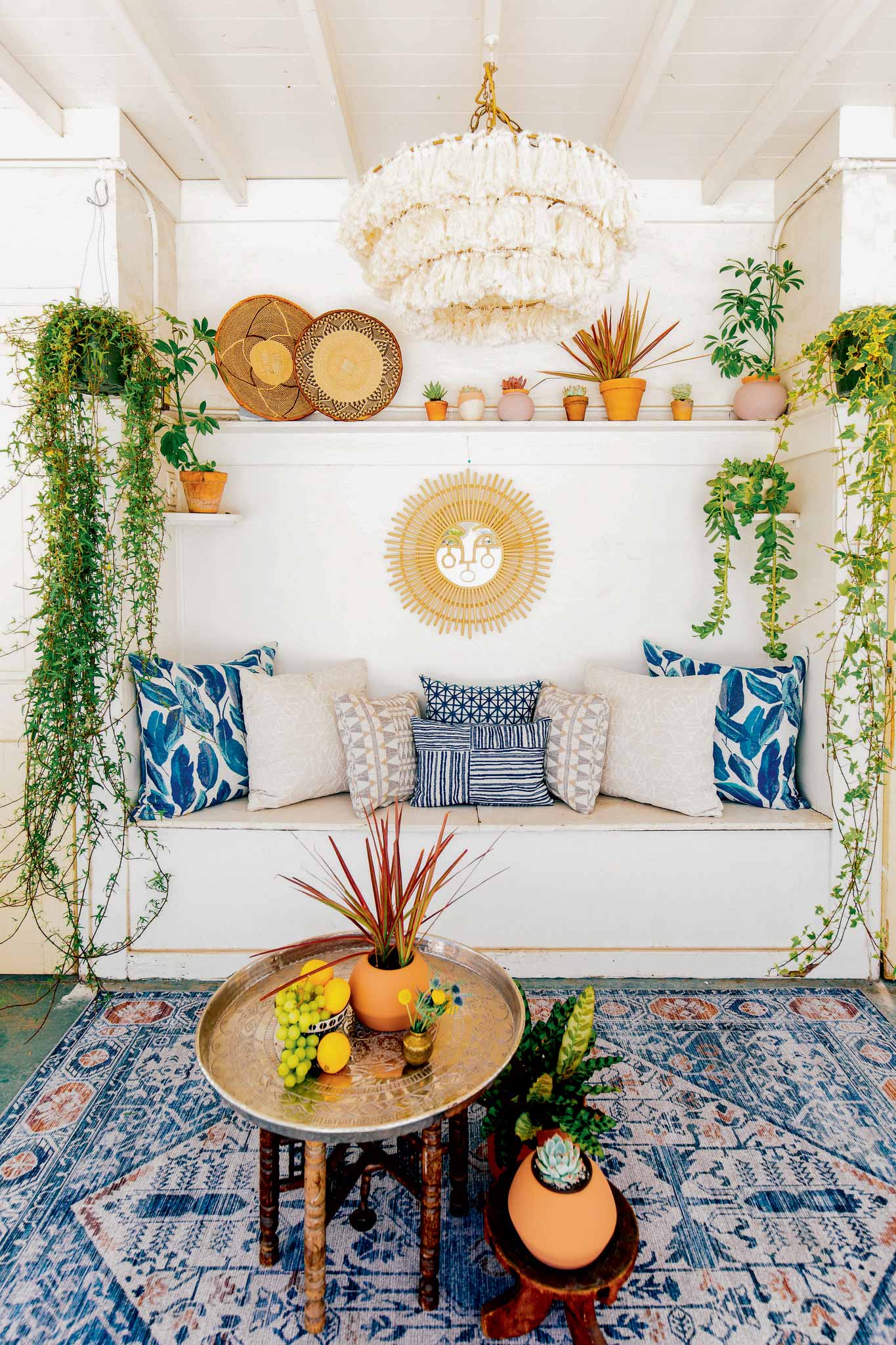Our friend Justina Blakeney has inspired us all with her new bohemian style, which is equal parts eclectic, cozy and utterly livable. Her newest book, Jungalow: Decorate Wild, is out now and helps readers create their own wild decorating aesthetic that showcases their personality and identity. We chatted with the designer, artist and author about how her home reflects her Black and Jewish roots, why she thinks we all need to live with nature and more.
Your new book is centered around the idea that a home is like a garden. Can you talk more about that?
I believe deeply in the human/nature connection. Just like plants, we are living beings that need an environment that supports and nourishes us in order to thrive. Strong connections to our roots help both plants and people to thrive. Like a garden, cultivating a home takes time and love. We must weed out the elements that do not serve us, leave space for growth and be connected with the earth in order to thrive.
How has your Black and Jewish heritage shaped your style?
I grew up with an eclectic mix of ethnic and cultural objects in my childhood home: mezuzahs, West African masks, menorahs, and art from Ethiopia. My parents’ relationship showed me that you can find meaning, healing, fulfillment and inspiration in people other than yourself and in a culture other than your own. This mixedness was all I knew growing up, and it was beautiful to me.
As an adult, I realized that everyone and everything is mixed. Jazz, for example, is a mix of West African rhythmic traditions and European tonal music. Even the English language is a mix of Germanic, Celtic, Latin, Greek and French influences. So I embrace the magic in the mix in all aspects of life, especially in my style and designs.
Why is it important that our abodes reflect our roots?
It is a reminder of who we are and where we come from. Our roots carry so many stories about not just us, but our ancestors, and those stories imbue any space with meaning. Have you ever walked into a home for sale and instantly known it was staged? It was probably because there was nothing personal, unique or meaningful in the home. Our homes are meant to be reflections of us, not generic spaces with nondescript personality.
There’s an intentional focus on mixing aesthetics. What are your tips for someone new to this concept?
Tap into the personal connections you have to different places. Those places that are most meaningful to you can guide your aesthetic mixing. The style mashups I include in the book are all inspired by places I have lived or visited, or that make up part of my cultural heritage and identity. They were born out of my memories and experiences walking through the souks of Morocco, looking up at the palm tree–dotted sky in California, living in Italy in my twenties, and my timeless love of all things lush and tropical. These are all very personal to me, but everyone has memories of places they have visited or lived, or that are culturally important to them. Those moments and memories of places that matter most to you are great jumping-off points as you experiment with mixing different design styles.
Your style is inherently colorful. How can someone identify their colors?
What colors light you up? What are the colors that make you feel energized? What colors are you consistently drawn to? Take a look in your closet and see if you have three or more shirts in the same tone. Or if you are drawing or painting — either by yourself or with your children — do you usually go for a particular color first? If you do, you probably are drawn to that color for a reason.
The wonderful thing about color is that it is like a language. There’s an infinite number of colors, and each conveys a different mood or phase of life that we are in, so it’s also great to remain open to the full spectrum of colors so that you can express yourself in all the ways you want to.
You’ve got a thing for pattern. What are some easy ways to incorporate pattern into our homes?
For someone who is dipping their toes into the pattern play pool, I’d suggest trying a pattern with a small scale in a color that already has a presence in your home. Smaller scale patterns can read as solids from a distance and offer a little surprise as you get closer, but still maintain cohesion by echoing the existing color in your home.
Another great way to introduce pattern into your home is through textiles. Throws, quilts, curtains, tablecloths and decorative pillows are versatile items that you can switch out every few months and let you experiment with the scale and color of the patterns you are drawn to.
If you are truly committed to incorporating more pattern into your home, wallpaper is a great way to make a big impact — plus wallpaper comes in easily removable forms now (peel and stick or even Sure Strip versus traditional wallpaper glue), so if you decide you don’t love it or want to switch it up after a few years, you can!
Why is it so important to you to live with nature?
It’s important to live with nature because we are a part of nature. We tend to externalize nature and make it this thing that is outside of us, but really it is us. We are part of it, along with animals, plants, water, air and all other natural beings. It’s important to maintain our connection to nature in our modern world, because it keeps us grounded, inspired and alive — literally and figuratively.
Nature also teaches us lessons about the cycles of life. Sometimes we need to let things go to make room for new growth. Other times, we need nourishment we cannot get from our roots, so we grow adventitious roots that sprawl and reach outward for external sustenance and inspiration. These are all teachings from nature I’ve absorbed into my own life.
This book is all about living wild. What does that mean to you?
Living (and decorating) wild is about being free. Not being too heady about things, and instead, meeting moments of inspiration with an open mind and heart. It also means looking within yourself to find what is important, beautiful and inspiring to you — even if other people don’t understand or see it. When we allow ourselves to grow wild, there is no limit to what we can achieve.






